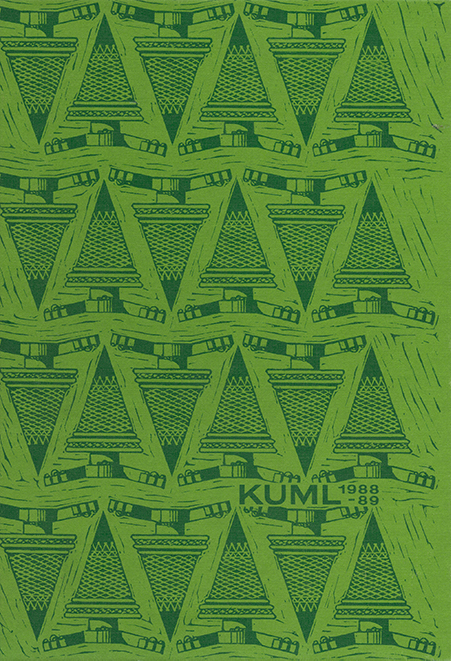Ochre graves from the Early Stone Age on Djursland
DOI:
https://doi.org/10.7146/kuml.v36i36.110860Keywords:
djursland, Ochre grave, early stone ageAbstract
Ochre graves from the Early Stone Age on Djursland
In 1987-88, near Fannerup, a little village on the north side of Kolindsund, the remains of several ochre graves were investigated. One of these was particularly well-preserved. The graves were situated near the top of a small headland, close to the remains of an Ertebølle shell-heap.
The ochre graves
The best-preserved grave, a male burial, had vertical sides dug down into the soil and a gently rounded bottom (figs. 3-4). The skeleton of the buried man showed that he had been placed stretched out on his back with his head to the north-east, but the body had been partially disturbed at both ends, head and feet. The grave filling had shell-material mixed into it, and the bottom 10-15 cm of filling around the skeleton was strongly ochre-coloured for the whole length of the grave. The strong ochre-colouring thus indicates actual strewing of ochre within the grave.
In addition to the extremely well-preserved skeleton-remains an antler-staff was also found, of an old type with the shaft-hole at the burr, at the head end of the grave. This is a well-sharpened specimen, with its surface covered with a variety of incised decorations. The »sheaf-of-corn motif« is particularly worthy of note, in that the grave can be dated on account of it to the beginning of the early Ertebølle Culture (figs. 5-6).
Two flint-flakes were also found near the hip-level -one of them a large flake-knife with retouch at the base (fig. 7).
During investigation of the adjacent shell-heap the remains of a completely destroyed grave were found -a number of ochre-coloured human bones, together with a single toothbead in a disturbed shell-layer.
Finally there are reports of a third grave, in the southern part of the shell-heap, which is supposed to have been found and excavated around the turn of the century.
Against the background of these grave-finds there is therefore much to indicate that on this site there was an actual burial-place from the Ertebølle culture.
Other ochre graves from Kolindsund
Previously ochre-coloured skeleton-remains have been found on one other site in Kolindsund -near the village of Koed, also on the north side of the sound. A C-14 dating places these skeleton-remains in the earliest Ertebølle culture, corresponding to the male grave from Fannerup.
Furthermore, in recent years investigations have been undertaken at yet another site at Kolindsund, at Nederst, and several similar ochre gaves have been discovered there.
In conclusion it must be said that both ochre-burials and actual burial-places are not, as was earlier believed, features which are confined to the area of eastern Denmark.
Gert Hougaard Rasmussen
Djurslands Museum, Grenå
Downloads
Published
How to Cite
Issue
Section
License
Fra og med årgang 2022 er artikler udgivet i Kuml med en licens fra Creative Commons (CC BY-NC-SA 4.0).
Alle tidligere årgange af tidsskriftet er ikke udgivet med en licens fra Creative Commons.


